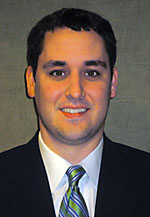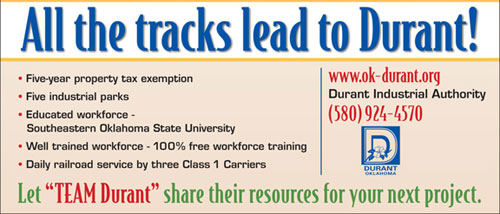ompetition among commercial real estate service providers to serve the requirements of corporate America has never been greater than it is today. More than ever, service providers must find new and innovative ways to differentiate themselves in the market in order to compete for business, which is becoming increasingly more sophisticated across all lines of industry.
Differentiators among service providers are becoming less about who you know, and more about experience and the ability to efficiently and effectively deliver project services

based on the objectives and ambitions of the client.
The centralization of corporate real estate decision making among U.S companies has in large part led to the modification and sophistication of the modern day service provider. But what does this mean as far as the challenges service providers must face and be equipped to overcome in order to win business opportunities?
Certain areas of priority have remain unchanged, such as the ability to provide cost-effective solutions, as well as being able to manage the critical timeframes and deadlines set forth by your client. However, though some traditional values have been and will always remain the same, there are areas which require more conventional business practices to be adopted in order to help secure the long-term client relationships which many service providers have enjoyed in the past.
When it comes to effectively serving corporate clients in today’s real estate market, knowledge is power. Simply providing a service is not enough in today’s market. Companies are looking for partners who bring a comprehensive understanding of their business, and who incorporate that understanding into pro-active plans aimed at meeting and exceeding business goals and objectives.
Brad Haertel, vice president with Carter, an Atlanta based full-service commercial real estate firm, says, “In today’s competitive market, service providers need to have a strong knowledge of what their clients’ business needs are across the board. Real estate transactions are time-sensitive dealings, and the more knowledge you bring to the table regarding your clients’ ‘big picture’ objectives, the more time you save on the front end of the deal, ultimately allowing you to better serve your client.”
Steve Bender, director of facilities management with Kimberly-Clark out of Atlanta, adds, “The service providers we use take the time to develop the relationship and understand that it is not just about the transaction. It’s about working together to come up with solutions that best meet corporate goals and objectives. It’s also about providing strategic analysis that will save the company money over the long term.”
So, while an impressive portfolio of past work experience has often gotten service providers into the door with many of their clients, it’s not what will keep them there. The ability to analyze business operations and apply practical solutions to long-term strategies is what will ultimately preserve the client relationship.
Corporate real estate departments across the country are being consolidated as a result of the diversification of service provider offerings. Companies are outsourcing more and more responsibilities to service providers who can no longer be single dimensional in their offerings to their clients if they want to keep consistent with the market.
The brokerage industry has experienced profound changes in recent years. Companies are looking for single-source representation on both the acquisition as well as the disposition of property. Certain brokerage groups have taken their value-added service a step further.
As leading corporate real estate organizations increasingly refine and enhance their strategic contributions to their organizations, many are proactively seizing the opportunity to align their companies’ real estate portfolio strategies with labor considerations, often engaging market experts to deliver strategic advisory services.
Service providers such as CB Richard Ellis Labor Analytics Group are providing market expertise to align their clients’ real estate strategies. Operational success, enhancing the company’s revenues, reducing costs and improving operating efficiencies and customer satisfactions are key areas.
According to Chris Hook, senior vice president, and Kristin Beatty, director of consulting for the CB Richard Ellis Labor Analytics Group: “With the instability of today’s U.S. economy, corporate real estate departments are under increasing pressure to look outside the traditional real estate lens and act as consultants and advisors to their internal clients to help solve the operating group’s biggest challenge: sourcing cost-effective, high-quality labor. Labor is at the heart of most corporations’ ability to successfully compete in today’s marketplace.?It is often a company’s biggest asset, while also being its biggest cost. And as businesses continue to be challenged with the dwindling supply and higher costs of today’s robust labor markets, they are demanding labor-centric solutions from their real estate departments.”
This concentrated focus on labor force dynamics around the country, and the subsequent bottom-line effect to their clients, has set the CB Richard Ellis Labor Analytics Group apart from many of its competitors. The extra layer of value-added information which they’ve integrated into their tenant rep backbone of services has resulted in a consistently high volume of customer opportunities with both first-time and repeat clients.
Green development has officially made its way into the culture of the commercial real estate industry.?Corporations are “thinking green” more than ever, finding long-term value in areas such as reduced operating costs, resource conservation and efficiencies, waste minimization and a healthy work environment.
As more and more tenants and building owners are becoming interested in green buildings, the responsibility lies with service providers to educate themselves in order to be able to anticipate and serve their clients’ growing demands.
Greg O’Brien is a senior vice president with Transwestern in Atlanta and leads the “Value of Green” team. His team works with clients to explore the cost benefits of green alternatives in real estate-related decision-making. O’Brien says, “The primary question should not be, ‘How much more does ‘green’ cost?’ It should be, ‘How green can we be with the given budget?’ Therefore, each service provider must understand the costs and benefits associated with the green products vs. the status-quo brown products and become involved at the front end to do integrated design.”
Becoming educated on the concepts and efficiencies of sustainable design is a must for service providers moving forward. As the green movement grows and gains momentum, so must the professionals who serve the industry and its users. In addition to allowing service providers a way to better serve their clients, equally important is the positive impact to our environment and natural resources.
— Matt Garcia is vice president of new business for ADEVCO Corporation, based in Atlanta, Ga. ADEVCO specializes in corporate office and call center development for Fortune 500 clients nationwide. For more information visit www.adevco.com, or contact Matt Garcia via email at matt.garcia@adevco.com.

